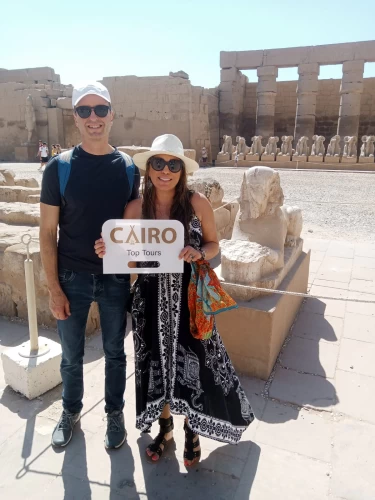
The Nubian Village
The Nubian Village stands as a secret treasure that exists along the Nile River.
South of Egypt in Aswan, beyond the Nile River, sits a dynamic cultural settlement called the Nubian Village. This village belongs to the descendants of Africa’s ancient Nubian civilization, who reside as the Nubian people.
Guests reach the Nubian village via felucca boats when the destination is nearby, but they can use “motorboat” transportation for other Nubian villages. The journey begins at the ship reception, and the guide assists visitors with essential information while feeding them nutritious meals during their Nile cruise.
A Glimpse Into Nubian History
Historically, the Nubians established their legacy long before the reign of pharaohs. The Nubian people controlled the powerful kingdoms of Kush and Meroë while earning fame for their sharpshooters, their significant trade activities, and their architectural skills. Throughout centuries, Nubians integrated elements from Africa and the Arab world until their distinct identity remained active at the Nubian Village.
Traditional Egyptian villages show differences from the Nubian village given its distinctive architectural approach, where Nubian men utilized local materials for constructing unique homes equipped with adobe dome shields, which shielded internal spaces from intense sunlight.
Location and Scenery
Several of the Nubian villages are found on the western Nile bank near Aswan, specifically on Elephantine Island, together with Gharb Soheil. Through their colourful architecture and artistic prints, traditional Nubian architecture immediately catches attention.
The Nubian Village sits in an enchanting environment between palm trees and desert hills while being bathed by the peaceful Nile waters. The destination allows visitors to experience a temperate environment that combines natural elements with cultural art forms.
Culture and Daily Life
Community-oriented life and traditional customs define the experiences of Nubians in their village. People from Nubia have a reputation for showing welcome with their welcoming practices, which include offering spiced tea with fresh dates along with friendly expressions. Music and dance take central positions during celebrations because drums and tambourines provide musical entertainment during weddings and festivals.
The Nubian language exists through elder communities in addition to traditional Nubian songs and oral stories, which continue to be passed down. The Nubian women typically wear attractive dress combinations along with decorative accessories as they participate in their cultural crafting practices.
Tourism and Preservation
More visitors today choose the Nubian Village as their preferred destination to experience genuine Egyptian culture. Visitors experience the village through boat tours, and they can eat in local houses and purchase handmade items as well as ride camels by the riverbank.
Regardless of increasing visitor numbers, the Nubian people prioritize the protection of their cultural heritage. The residents convert their houses into ecotourism accommodations and artwork galleries to showcase their indigenous traditions with travellers who also maintain their social practices.
Final Thoughts
The Nubian Village offers its visitors more than tourist views because it delivers a complete cultural exploration.
Visitors have an exceptional opportunity to observe a culture that exists perpetually with success and endurance. Every visitor experiences a memorable cultural journey at the Nubian Village because of its historical importance and artistic and peaceful environment.


















